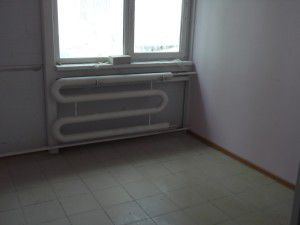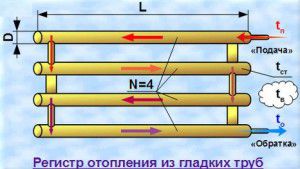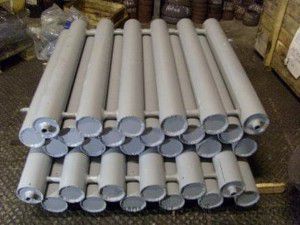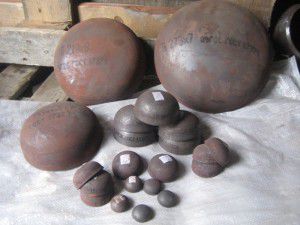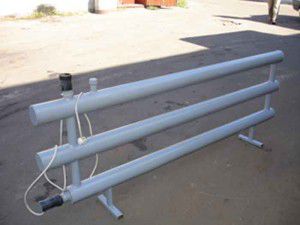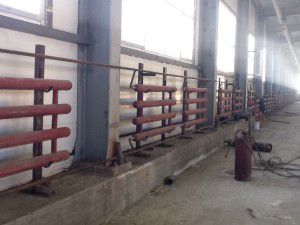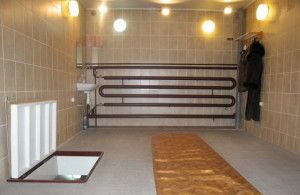To organize the heat supply of large rooms, it is impractical to use standard factory batteries and radiators. They have too little heat output and rated power. As their alternative, we can consider heating registers: production from pipes, rules for performing calculations and installation features.
Advantages and disadvantages of heating registers
Home-made steel or aluminum heating registers differ from standard radiators in their sizes. They consist of several pipes whose diameter exceeds 32 mm. To organize the circulation of the coolant, the pipes are interconnected by nozzles.
What determines the popularity of these heat supply devices? Firstly, the possibility of self-manufacturing. You can make bimetal heating registers, steel or aluminum pipes. Plastic models are much less common, as they do not have the proper performance.
Before you connect the heating registers, you should carefully study their "weak" and "strengths".
Benefits of use:
- Long life. For steel and aluminum models, it can reach 25 years. In this case, the probability of failure will be minimal;
- Greater heat dissipation. This is due to the fact that the power of the heating register exceeds this parameter for classic radiators and batteries. It is associated with a large volume of coolant;
- Simple installation and operation. Since it is possible to correctly set the heating registers by anyone who is at least a little familiar with the rules for organizing heat supply, they can be used in all types of buildings. But most often they can be found in the heating system of large industrial, administrative and commercial premises.
But besides this, it is necessary to take into account possible disadvantages that a heating register from a smooth steel pipe may have:
- Large volume of coolant. This leads to its rapid cooling;
- Minimum air convection. Reduces the efficiency of heat supply;
- Unattractive appearance. Most often this applies to home-made designs.
A correctly calculated heat transfer of a heating register directly depends on its design. Currently, several types of these heat supply devices are used, which differ not only in the material used for manufacturing, but also in appearance.
The mass of a water-filled register can be very high. Therefore, you need to think in advance of a reliable system for attaching it to the wall.
Types of heating registers
Initially, you should determine the type of design. After all, how to calculate the heating register, if its geometric parameters and the principle of circulation of the coolant are not known? For the manufacture of heating appliances, it is recommended to use standard proven schemes.
The determining parameter is the required rate of circulation of the coolant in the system and the degree of heat transfer of the register. Based on these requirements, you can choose two types of heating devices:
- Sectional. It consists of two or more large diameter pipes connected by nozzles. The cross section of the latter should be equal to the same parameter of the supply line.The selection of a heating register of this type is relevant for systems with forced circulation, since the design creates excessive hydraulic resistance during the passage of the coolant;
- Serpentine. Consist of one pipe that has bends. Making such home-made heating registers is problematic. To increase the circulation rate, pipes can be connected by nozzles. But this is not mandatory, as in the above models.
Since you can make a heating register with your own hands even at home - they are often made, and not finished models are purchased. But before that, you must perform the correct calculation of the power of the heating register.
For the manufacture of registers, you can use pipes of various sections - round, rectangular or square. Preference is given to the first, since for them the friction of water during movement will be minimal.
Calculation of heating registers
There are several methods for calculating the parameters of heating registers. They are distinguished by accuracy and complexity. But for the organization of heat supply using steel or aluminum heating registers, it is recommended to resort to the services of professionals. An alternative is to use special software.
However, in some cases, it is necessary to correctly calculate the heating register yourself. To do this, you can use the simplified scheme. First you need to know the following parameters:
- The total area of the heated room;
- The heat transfer coefficient of the material of manufacture of the register;
- Diameter of pipes used for manufacturing.
For circular pipes, the calculation of the specific power of the heating register can be done according to the table. These values are given for 1 mp pipe register.
| Diameter, pipes, m | 25 | 32 | 40 | 57 | 76 | 89 | 110 |
| Area, m² | 0,5 | 0,56 | 0,69 | 0,94 | 1,19 | 1,37 | 1,66 |
However, this method of selecting a heating register has a number of significant drawbacks. Data are given for rooms where the ceiling height does not exceed 3 mp, the thermal mode of the system and the air temperature in the room are not taken into account.
For more accurate calculations, it is recommended to use the formula:
Q = P * D * L * K * Δt
Where Q - specific thermal power, W,P - number π - 3.14, D - pipe diameter, m.,L - the length of one section, m,TO - coefficient of thermal conductivity. For metal, this indicator is 11.63 W / m² * C,Δt - temperature difference between the coolant and the air in the room.
Knowing these parameters, you can independently calculate the power of the heating register. Suppose that the length of one section is 2 m and the pipe diameter is 76 mm. Δt is 60 ° C (80-20). In this case, the power of one section of the heating register from a smooth steel pipe will be equal to:
Q = 3.14 * 0.076 * 2 * 11.63 * 60 = 333 W
To calculate each subsequent section of the device, the result obtained must be multiplied by a reduction factor of 0.9.
Using this technique, it is impossible to calculate finned heating registers. Their heat transfer will be higher due to the increased area of the device.
We select the material of manufacture for the registers
The next parameter, which must be taken into account when choosing a register, is the material of its manufacture.
You can rarely find heating registers from a profile pipe - most often steel products of circular cross section are used for this.
Currently, several materials are used for the production of registers - metal, aluminum or bimetal pipes.
The difference between it is the calculated heat transfer and the service life:
- Steel heating registers from a profile pipe or round section. They are characterized by ease of manufacture and low cost. The disadvantage is surface rusting. When choosing, special attention should be paid to the quality of the welds;
- Aluminum. They are extremely rare, since equipment is especially necessary for welding aluminum heating registers. But then they have the best thermal conductivity. Virtually no heat loss;
- Bimetallic. They are made from a special type of heating pipe. They have a core made of steel. To increase the heating area, the design has copper or aluminum plate heat exchangers. All bimetal heating registers are characterized by a small pipe diameter of up to 50 mm. Therefore, they are more often used to organize heat supply in residential buildings and small industrial and commercial premises.
Production material directly affects the calculation of the heating register. The main indicator in this case is the coefficient of thermal conductivity. Despite the fact that aluminum models have an optimal value - their high cost and the complexity of manufacturing do not allow the use of registers of this type in heating systems everywhere.
For the manufacture of ribbed heating registers, you can use accessories from steel radiators.
Making registers for do-it-yourself heating
One of the advantages of using registers in heating systems is the possibility of their independent manufacture. For this, steel pipes of circular cross section are most often used. Despite the fact that the heat transfer rate of the heating register in this case will not be ideal - the manufacturing process will not require special skills.
For the independent production of this heating element, a pipe with a diameter of 40 to 70 mm is required. A larger value of the cross section will lead to significant heat loss during the circulation of the coolant. You can make a heating register with your own hands according to the following work scheme:
- Calculation of the optimal parameters of the heating device - the diameter of the pipe, the total length of the section.
- Drawing up a drawing to calculate the optimal amount of material.
- Do-it-yourself heating register manufacturing.
- Checking the design for leaks.
To accomplish this task, you will need a steel pipe designed to form the main registers and a trunk of a smaller diameter. With its help, the registers will be connected to each other and to the heating system. You will also need special end caps for pipes.
At the first stage, it is necessary to cut the pipes to the desired length using a grinder. It is not recommended to use a welding machine for this, since a weld will form from the round pipe at the ends of the heating register. Then, holes are made for connecting the nozzles. The pipes are welded by the welding machine and end caps are mounted. To ensure the safety of the home-made heating register, it is necessary to install an air vent and a drain valve. They are mounted in the upper part of the structure, but on the opposite side relative to the point of connection to the heating.
In some cases, the traditional scheme of a steel or bimetal heating register is modernized. It consists in installing an electric heating heater.
So you can make an autonomous source of heat, which will not depend on the operation of water heating. In the event of an accident or technical work, a home-made heating register will generate heat using a heater. But for this, shut-off valves must be installed during installation so that the coolant circulates only inside the heater.
During the selection of the circuit and the manufacture of the heating register, the thickness of the pipe does not matter. The difference in diameters between it and the supply line leads to the complete absence of water hammer in the structure.
Installation of registers in the heating system
Correct installation of heating registers can be done in two ways - on threaded connections or using a welding machine. It all depends on the total weight of the structure, its dimensions and the parameters of the heat supply system.
In general, experts recommend that you follow the same rules as when installing radiators. The difference is only in the size of the structure. If it is necessary to connect the heating register to the gravitational system, the required slope indicator must be observed. The heat supply device should be tilted in the direction of movement of the coolant. For systems with natural circulation, such requirements do not exist.
For the correct installation of the heating registers, the following rules must be followed:
- Compliance with the minimum distances from the wall and window structures. It should be at least 20 cm. This is necessary for technical or repair activities;
- For threaded connection of the heating register, only paranitic linings or sanitary flax are used;
- All heating registers from profile or steel pipes are painted without fail. This is to prevent rust from appearing on their surface.
Despite the fact that the heat transfer coefficient of the heating register will decrease in this case, the period of non-repair service of the structure will increase significantly.
Installation is recommended not during the heating season. After a trial run of the heating system, you can compare the calculated power of the register with the actual and, if necessary, make operational changes to the design.
Rules for the operation of heating registers
To increase the service life, it is necessary to carry out a number of measures to maintain heating registers in working condition. It is recommended to make a schedule of control checks, including a visual inspection and analysis of the temperature regime of the register.
In addition, it is necessary to periodically clean the internal surface of the structure from scale and rust. To do this, it is best to use the hydrodynamic method, since chemical cleaning will require a large amount of special fluid. This can be done without dismantling the structure - it is enough to install nozzles in the manufacture to provide access to the internal cavity of the register.
Each time before the new heating season, structural integrity, reliability of welded and threaded joints is checked. If necessary, gaskets are replaced and repair seams are welded.
Can heating registers be used for heating a private house? This practice exists, but copper pipe products are ordered for this. They are characterized by high cost, but at the same time they have a number of distinctive qualities. Their attractive appearance, which differs significantly from steel structures, is also taken into account.
The video shows an example of manufacturing a register from a steel profile pipe:
